#Gouache Waxed Canvas
Explore tagged Tumblr posts
Text
Celebrate Father's Day with Unforgettable Experiences at Seda Manila Bay
This Father’s Day, show your appreciation for the man who means the world to you with an extraordinary celebration at Seda Manila Bay. The hotel has crafted exclusive offers that promise to make his day truly special. Toast to all the amazing dads out there with a luxurious room package and delectable dining options that will leave lasting memories. Dad-ventures by the Bay Treat your dad to a…
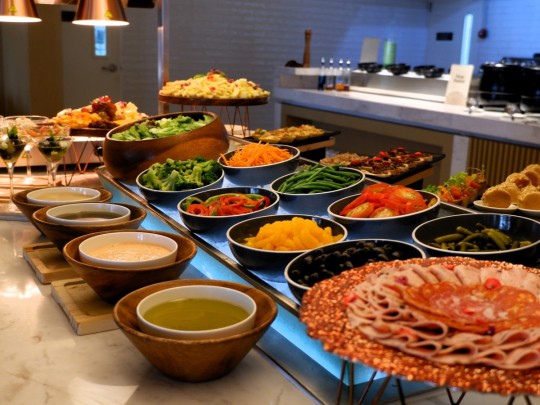
View On WordPress
#American Crew#celebrate dad#deluxe room package#family bonding#family staycation#Father&039;s Day#Father&039;s Day 2024#Father&039;s Day gifts#Father&039;s Day lunch buffet#Father&039;s Day special offers#Gouache Waxed Canvas#hotel dining#hotel spa massage#Jade’s Temple#Karabella Gelato#luxury staycation#Makina Watches#Manila Bay activities#Manila Bay hotel deals#Misto restaurant#Nike#press release#Pup Up#Seda Hotels#Seda Manila Bay#Straight Up Bar
0 notes
Text
I am using this Tumblr account as a blog for showcasing the free little art galleries my art ends up at.
In November of 2024, I decided to participate in donating my art to F.L.A.G.S. once I found out it was a thing through a reel on Instagram. I figured this was a great way to get into the habit of painting more while gifting original art and hopefully getting my reputation out there.
I began to wet my feet in learning to paint, by following Bob Ross tutorials. The difference of course was that I was painting on 3X3 canvases with the mediums and tools of my choice.
This first one I couldn't fit the entire scene in the tiny canvas, but I did my best to make it painterly. It's painted with gouache and sealed with encaustic. I got this idea from an Artist I found on Etsy, known as Kelly Brown, from Little Wax Paintings. Of course she paints even more spectacularly with bright and bold colors. I'm a fan and have bought a couple of her artwork. With these purchases, she's gifted me a couple of tiny originals and a print as well.
Anyway the first little painting I gifted to the closest F.L.A.G. from my home at the Free Little Art Gallery in NoHo.
#freelittleartgallery #freelittleartgalleries #flags #tinyartwork #miniaturepainting #tinybobrosspainting #minipainting
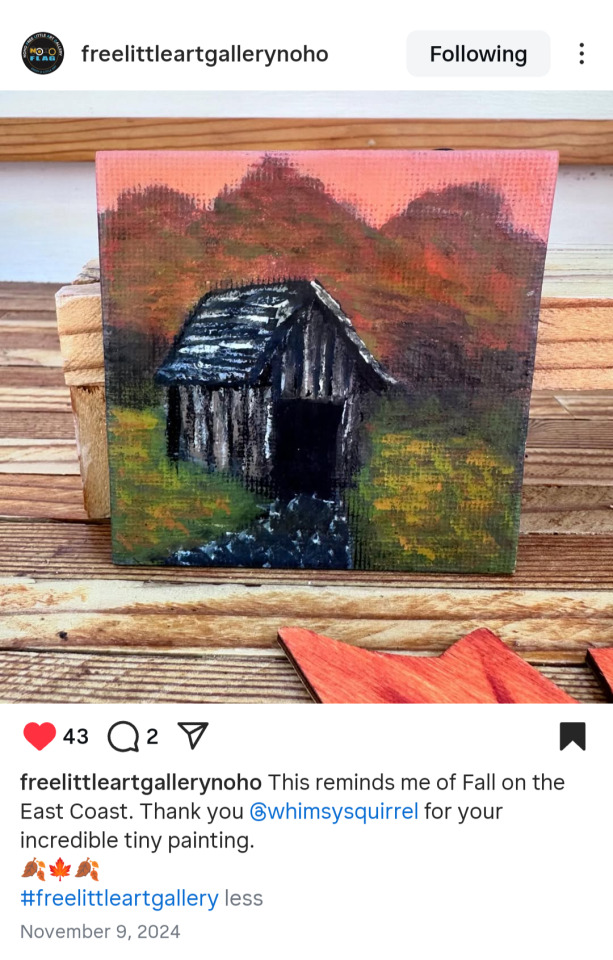
4 notes
·
View notes
Text
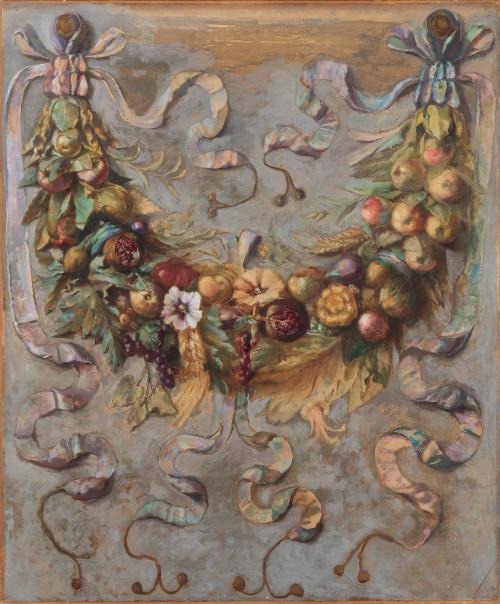
Garland of Fruit and Flowers
Artist: John La Farge (American, 1835-1910)
Date: 1882
Medium: oil, gouache, wax on paper on canvas
Place of Origin: United States
11 notes
·
View notes
Text
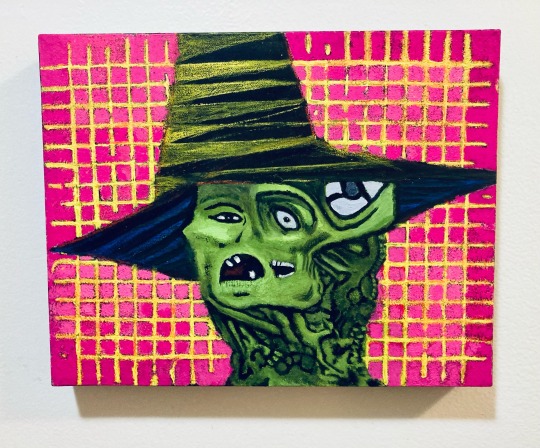
Witches in the Dream-House 2024
Acrylic, gouache, casein, and wax pastels on canvas
14” x 11”
2 notes
·
View notes
Text

Scott Treleaven, Untitled (cosmos), 2022 acrylic, gouache, oil, wax pastel, fluorescent pigment, on canvas 30 × 24"
9 notes
·
View notes
Text
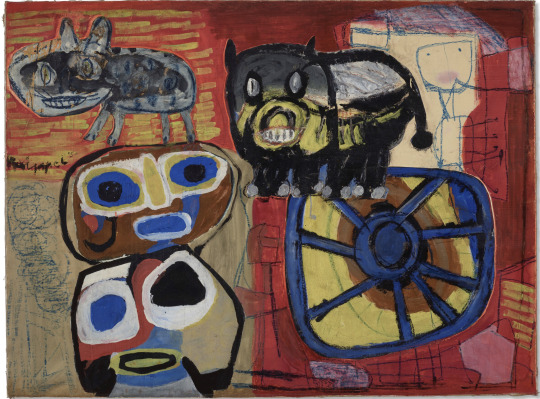
Karel Appel (Dutch 1921-2006), De boerderij (La ferme), 1950. Paper collage, gouache and wax crayons on paper laid on canvas. 96.5 x 129.5 cm.
#Karel Appel#art#contemporary art#20th century art#avant garde#CoBrA art group#CoBrA art movement#Dutch art#Dutch artist#The Askew#theaskew
4 notes
·
View notes
Note
"wax poetic" because why not!
Send 'wax poetic' for Gale to monologue. Likely in ways far too sentimental: no longer accepting.
He meets her gaze.
Perhaps she's an empty canvas. Most would believe her blank linen and or a stretch of wiped weave. Certainly, Gale has wondered to her story, to what oils and gouache would so color her tale. He knows she can't remember, her head fogged over like the morning of a storm, but the knowledge of this fact only stokes him all the higher, his musings and his wonders wicked alight like flame.
Gale thinks upon her achings, mind flashing with the memory of her marrow-deep scar. It would peek when they were battling, her shirt rucking high for but the quarter of a glimpse, and not for the first time and certainly not the last, a horror, a terror would paint her corners. He hadn't asked to it yet. He hadn't come to pose the question as to how it came. Yet, she's caring, isn't she?, and gentle like the bird-song that would creep at early dawn. Whatever haunted her past, it'd been desperately devoted to swathing her black, but there's the sweeping of colors much sweeter in flavor. He spies orange. And sweetpea. And marzipan-cream.
No. She is not an empty canvas. She's a restoration, a forming fresco in the works. Gale's knows that she's hurting, is boasting vicious bruises she's not the mindset to recall, but she is a vast deal more than just a portrait of her phantoms. She is, Gale would tell her, a promise, too.
A rococo. A baroque. Or a mosaic boasting jewels. An admirer of the arts, his heart goes soft.
0 notes
Text
All about painting
- Painting is away for artists to express their ideas, emotions, opinions, beliefs and many other expressions. They do this through visual language by creating certain aesthetic qualities in a two- dimensional way.
-Paintings are made up of shapes, lines, colours, tones, textures, and other marks. This creates volume, space, movement and light within work. All these aspects are combined in order to convey whatever the artist wants to express to the viewer.
-mediums: tempura, fresco, oil, acrylic, watercolour, as well as other water based paints such as, ink, gouache, encaustic and casein.
-forms of painting: mural, canvas on easel, panel, miniature, scroll, screen, fan and other more modern forms.
cultural traditions and painting: tribes, religions, guilds, royal courts, and states had a high influence and controlled the form, imagery and subject matter of paintings. They also decided whether a painting was for ritualistic, devotional, decorative, entertaining or educational purposes.
- Due to fine art, many artists began combining other mediums and ways of working with painting. For example artists combined painting with sculpture and collage.
painting techniques:
-acrylic painting=uses synthetic resin to bind pigments and can be diluted.
-action painting= consists of randomly splashed, thrown or poured paint onto surface.
- aerial perspective= a technique the allows a distant object with in a painting become fainter and more blue.
- anamorphosis=allows an artwork to be distorted from the viewpoint of one angle and to not be distorted from another angle.
-camaieu= subjects or objects in paintings are convey and painted through shades or single tints and colours. These hues are unnatural to the objects
-casein painting=fast drying, water- soluble medium
-chiaroscuro= strong painterly contrast between light and dark that effect the entire composition.
-divisionism=this technique is used in Neo-Impressionist paintings and is defined by separation of colours, usually convey by individual dots.
-easel painting= an easel is an upright support usually made from wood that allows surfaces such as stretched canvas to rest upon.
-encaustic=also known as hot wax painting that allows coloured pigments to be added.
-foreshortening= a technique that allows an object or body be depicted in a way that creates an illusion of projection or extension in space.
-fresco painting= a technique mainly used for mural painting and is used on freshly laid lime plaster. Water is combined with the dry powder pigment to merge with the plaster.
-gouache=is a type of opaque watercolour that consists of natural pigment water, a binding agent and at times additional inert material.
-graffiti= images or text usually painted onto buildings using spray paint.
-grisaille=a painting that has been done using only shades of grey or another neutral greyish colour.
-impasto= paint applied thickly on a surface allowing palette knife and brush marks stand out.
-miniature painting=a small illustration that us created and used to decorate an ancient or medieval illuminated manuscript.
-mural= a graphic artwork that has been applied directly to a wall, and other permanent structures.
-oil=painting with pigments with a medium of drying oil as a binding agent.
-panel=a panel of wood either displayed alone or with a number of others, used before canvas became a popular surface to paint on.
-panorama= these works are usually extremely large scale that depict an entire view of a specific subject i.e and entire town.
-perspective=linear or point projection are two types of graphical projection perspective.
-plain-air painting= an act of painting outdoors
-sand painting=the act of trickling small amounts of crushed, coloured sandstone, charcoal, pollen or other dry materials into paint and then applying to a smooth surface.
-scroll painting=paintings completed on scrolls. Scrolls are usually made from paper or cloth.
-sfumato= actively softening the transition between paint colours making it hard for the viewer to focus on certain details.
-sgraffito=Italian word meaning “scratched” the action consists of putting down a primary surface i.e paint and then scratching that surface.
-sotto in su=illusion ceiling paintings popular within the Renaissance, Baroque and Rococo art period
-tachism= a french style of abstract painting that was popular within the 1940s and 1950s.
-tempura painting=also known as egg tempura is a fast-drying painting medium that is made from pigments that are mixed with water-soluble binding mediums, usually egg.
-tenebrism= this technique came from Italian tenbroso that consisted of dramatic illumination creating a very high contrast of light and dark within a painting.
-tromp l’oeil=is an artistic term that describes a high level of a realistic optical illusion of three- dimensional space and objects on a two- dimensional surface.
How does this relate to my work?:
As I have chosen to utilise paint as my main medium within this project I decided to research painting and painting techniques. May sound simple and obvious, however, paint is not a medium that I usually gravitate towards. Therefore, I felt it was necessary to research the medium, during which I discovered techniques and ways of working that I was not aware off. I plan to use some of these techniques within my work. For example I will make use of the technique Sgraffito, sfumato, impasto, acrylic painting, action painting, easel painting and using canvas as a surface to paint.
0 notes
Text
ART MEDIUMS
2D
3D
Acrylic Paint
Airbrush
Animation
Architecture
Body Art
Bronze
Calligraphy
Caricature
Carving
Ceramics
Framed Art
Glass Art
Metal
Mixed Media
Oil on Canvas
Paper Art
Photography
Sculpture
Stone Art
Watercolor
Wood
Works on Paper
CGI
Chalk
Charcoal
Collage
Colored Pencil
Drawing
Enamel
Film
Glass Blowing
Graphic Arts
Handicrafts
Illustration
Ink
Installation
Intaglio
Ivory
Jade
Kinetic
Lino Cut
Lithography
Mandala
Marble
Metal Casting
Metalwork
Mixed Media
Mobile
Modern
Mosaic
Mural
Oil Paint
Paper Cutting
Pastel
Pencil
Performance
Photography
Potter
Pottery
Print Making
Relief Printing
Screen Printing
Sculpture
Sketch
Stained Glass
Tapestry
Tattoo
Textile
Video
Watercolor
Wood
Wood Carving
VISUAL ART MEDIUMS
Appendix One
Sketching
Engraving
Watercolors
Oil Painting
Architecture
Drawing
Film
Installation
Painting
Performing Art
Photography
Printmaking
Sculpture
Sound Art
Textiles
ARTS/CRAFTS MATERIAL
Canvas
Paint
Charcoal
Clay
Playdoh
Card
Cardboard
Glue
Sellotape
Charcoal
ART MATERIALS/TOOLS
Oil Paint
Acrylic Paint
Charcoal
Pastel
Tempera
Fresco
Marble
Bronze
Concrete
Glass
Stone
Wood
Ceramics
Lithography
Oil
Acrylic
Pen & Ink
DRAWING/PAINTING TECHNIQUES
Oil Painting
Watercolor
Gouache
Charcoal Drawing
Wax Crayon Drawing
Colored Pencil Drawing
Ink Drawing
Felt Tip Pen Drawing
Dry Pastel Drawing
Oil Pastel Drawing
VISUAL ART STYLES
Murals
Still Life
Mosaics
Abstract Art
Landscapes
Portrait Painting
ARTWORK SUBJECT MATTER
Abstract
Animals
Architecture
Coastal
Cultural
Figurative
Florals
Landscape
Landscape Abstract
Nature
Nautical
Photography
Portrait
Scene
Still Life
Typography
Vintage
0 notes
Text
FINALLY IT STRUCK ME WHERE I CAN USE IT!
MY MOSS GIRL IDEA







I drew rough shadows using a black permanent marker, inspired by the comic style of Killing Stalking.

https://youtu.be/ZK6sH6d2YhA?si=egvEbRhvEiBaNCwt
I've reused dried moss from my previous ASSEMBLE project.
I painted the face in different shades of green using acrylic paint and created a background with contrasting colors to enhance the intensity.
For the emotion, I thought it would be really cool if Target looked scared, mimicking a classic horror scene—the moment when a character slowly looks up as something starts dripping on them. This references blood, and I plan to use wax for the blood drops to make it more unsettling.


Also, what I really love about this sculpture is that depending on the angle, the expression changes and intensifies, which makes it a perfect representation of movement—both literally and conceptually.





But I didn't stop there—I wanted to explore the reason behind the 'wax blood' dripping down. Where is it coming from?
I decided there should be a saying calling out "LOVE ME", which then starts bleeding—a visual metaphor for desperation, obsession, and pain in love.
I went into an editing software to brainstorm design ideas and figure out how to attach it to the main canvas.




Meanwhile, while I was deciding, I thought it would be even better to add tears to make the emotion more expressive.
For the tears, I used UV resin, layering it to create more depth—in the end, I applied 10 layers for a more dramatic effect.






While I haven't fully decided on the design yet, I went ahead and made the actual callout from 2mm cardboard.
I also printed out the saying in different fonts to see which one would suit best.

After brainstorming, I decided on a much simpler design because this canvas was meant to be hung on the wall, and initially, I planned for the saying to hold the main canvas. However, that would have been illogical, as it wouldn’t be able to support the weight. So, I let the main canvas support itself rather than relying on the saying to hold it up.
The reason I chose to have the letters overlapping some of the canvas was inspired by PhotoNegativki.
Their work is an art protest against war, and in their older pieces, they incorporated Russian sayings into the picture, making the text feel like an organic part of the artwork rather than just an addition.
I wanted to do something similar to create a more fluid, integrated composition where the text becomes part of the overall visual narrative.


Also, I thought my sculpture needed more relief, so I decided to add hearts using tissue paper craft.
To make this substance, I:
Ripped tissues into small bits and let them soak in water for a while.
Added PVA glue in a 1:1 ratio.
Mixed in gouache for coloring.
Stirred everything together until the mixture was ready!

The final result!
Sculpture quick tutorial with vacuum molding

I talked to my professor, and she gave me some ideas for further developing my theme. I'm not sure where I'd like to incorporate them, but it was a good opportunity to practice new methods and materials.
3 notes
·
View notes
Text
I love when you see an art piece at a gallery/museum and the plate is like untitled, 2021. materials: gouache, canvas, plywood, pencil, resin, charcoal, porcelain, papier-mâché, human hair, horse hair, wax, 24k gold, human hair (pubic), polyurethane, embalming fluid, concrete, moon sand, legos, potting soil, cardboard, styrofoam, milk bottles, Swarovski crystals, bronze, feathers, twine, bone, semen, blood, poop, pee, mercury, silk, fishing line, leather, anthrax, stained glass, grocery bags, digital recording.
23 notes
·
View notes
Text
The Pros and Cons of Working with Acrylic Paint
Acrylic paint was first developed in the 1950s as house paint and was made commercially available in the 1960s as artist-grade paint. And since then, it has become the primary art material for many contemporary artists.
Compared to oil paint and watercolour, acrylic paint is a recent discovery in art. Its versatile nature, vibrancy and stability have overtaken the art world. As more artists take advantage of the broader perspective of acrylic paint, more acrylic paint products hit the market.
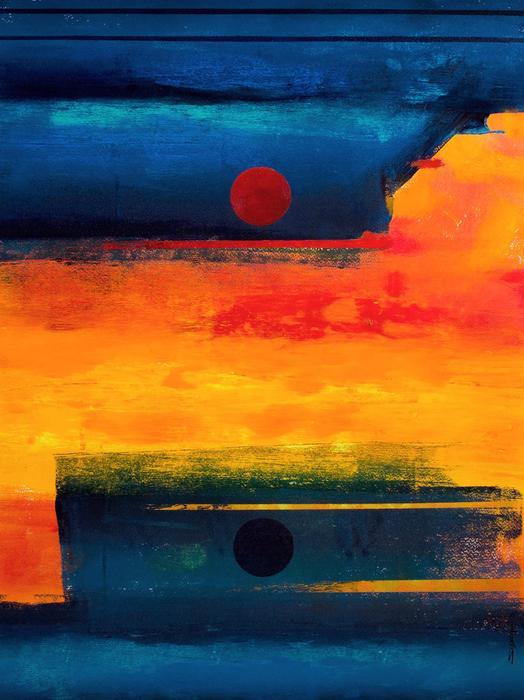
Want to learn more about acrylic paint? Here we will tell what it is, its pros and cons.
WHAT IS ACRYLIC PAINT?
Acrylic paint is paint made from pigments suspended in an acrylic emulsion. It is water soluble and fast drying and becomes water-resistant after drying.
Acrylic paint is highly versatile. Depending on how much the paint has been diluted with water, or modified with acrylic gels, mediums, or pastes, a finished acrylic painting may resemble a watercolour, a gouache, or an oil painting. It may also have unique characteristics that are not obtainable with other media.
WHAT MAKES ACRYLIC PAINT DIFFERENT?
Previously, artists used to mix their paints to get the colours and textures they wanted. They could control the ingredients, like fillers, in their paints. However, it could be more practical to mix it by hand with acrylic paint. That's because it dries quickly and has other technical issues. Instead, artists buy ready-to-use acrylic paint, which they can modify using acrylic mediums or water.
Acrylic mediums offer more options compared to watercolour and oil paints. Acrylics can stick to many different surfaces, and mediums can be used to change how they bind to those surfaces. Acrylics can be used on paper, canvas, and various materials like hobby models (trains, cars, houses).
TRADITIONAL VS MODERN ACRYLIC PAINT
Even though acrylic paint is relatively new to the art world, there are still paints referred to as 'traditional' acrylic paint and 'modern' acrylic paint. Traditional acrylic paints are fast-drying paints that have been around for the past five decades and are made from brands such as Liquitex, Winsor & Newton, Golden and Grumbacher. Modern acrylic paints do not dry as quickly and can be reactivated after drying, and are made from brands such as Dirums and Chroma.
PROS AND CONS OF TRADITIONAL ACRYLIC PAINT
Toxicity level
Advantage: Acrylic paints are water-based, meaning they can be thinned with water (no toxic spirits are needed). In addition, wet paint can be cleaned using only soap and water.
Disadvantages: The pigments in acrylic paint can contain toxins, as can those in some oil paints. Additional toxins can be found in acrylics that use 'retardants' to slow drying time.
Drying time
Advantage: Traditional acrylic paints dry fast, so there's no need to wait between painting sessions for layers to dry. The paintings are dry enough to be shipped safely within a day or two.
Disadvantages: Because acrylic paints dry quickly, they cannot be mixed easily to create the 'wet in wet' technique popular with oil paints. For this reason, a finished acrylic painting may look more tacky than a finished oil painting.
Reactivation
Benefits: Unlike watercolours (another water-based paint), once traditional acrylics dry, they are mounted on a support for a longer shelf life. This makes it easier to paint new layers on top of the previous ones.
Disadvantage: It cannot be removed or changed once the paint is dry.
DURABILITY
Benefits: Acrylic paints have proven to be more flexible than oil paints. There's no need to follow the fat over-lean rule with acrylics so they don't break.
Disadvantages: We've only had acrylic paints for about 50 years, so we can't comment on how long they'll last.
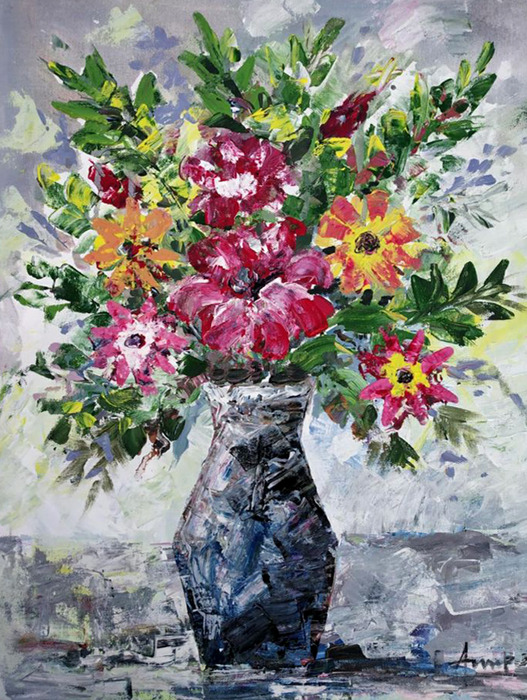
Consider the advantages and disadvantages of acrylic paint
Pros
It is versatile. You can paint on any surface that is oil and wax free. This includes canvas, wood, paper, rocks, glass, fabric, cardboard, metal and plastic. With the proper preparation, you can use acrylic paint on almost anything.
It dries quickly. With this, you can complete your project faster.
It is soluble in water. You can wash it off with your hands and brush (while they're still wet) with soap and water without needing paint thinner.
It is less toxic and much safer around children and pets.
It is more economical.
It's flexible. You can mix acrylics with many different mediums to get different textures, adhere characteristics, or change the drying time.
It is durable. As far as we know, acrylics are flexible and will not break, peel or yellow.
It's alive.
It is waterproof when dry.
Cons
It gets darker when it dries, so you won't necessarily get the exact colour you paint with.
It's also fast-drying, which means you'll have to work quickly.
Once dry, it is difficult to remove once dry with a brush, fingernail or cloth. It's best to have a water container when you paint to keep the brushes wet, so they're easier to clean. You should also wear protective clothing.
Once dry, it is difficult to remove with fingernails or clothing.
It is considered by some art galleries and collectors to be 'not as valuable' as compared to other paint mediums.
Discover a wide collection of acrylic artworks in various subjects such as nature and religious paintings at discounted prices from Dirums Collective. As an Indian-owned online company, they are committed to offering you a broad selection of arts and home decore supplies at competitive prices. Start shopping today.
Artwork, much like the decorations found in luxurious hotels, adds a special touch and attractiveness to accommodations. It fosters creativity, offers fresh perspectives, and provides a relaxing escape from daily routines.
4 notes
·
View notes
Photo
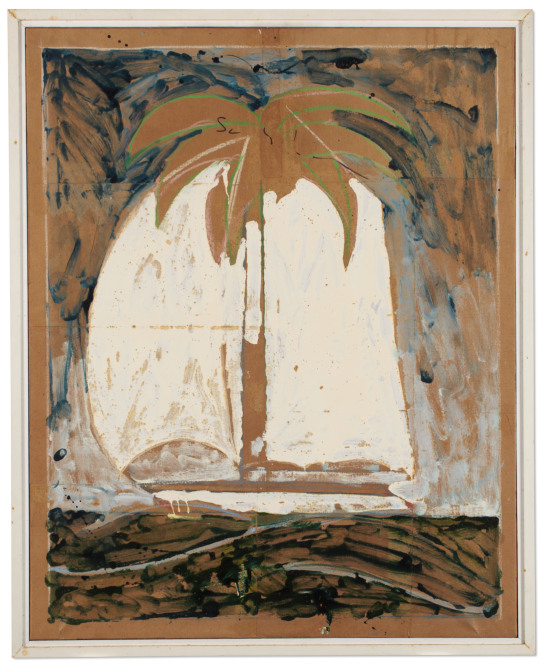
Mario Schifano (Italian, 1934-1998), Untitled, 1979-80. Enamel, gouache and wax crayon on paper laid on canvas, 100 x 80 cm
73 notes
·
View notes
Photo

Marc Chagall (1887-1985) Fleurs devant le clocher (1967) gouache, watercolor, colored wax crayons and pencil on paper laid down on canvas 64 x 52 cm
75 notes
·
View notes
Text
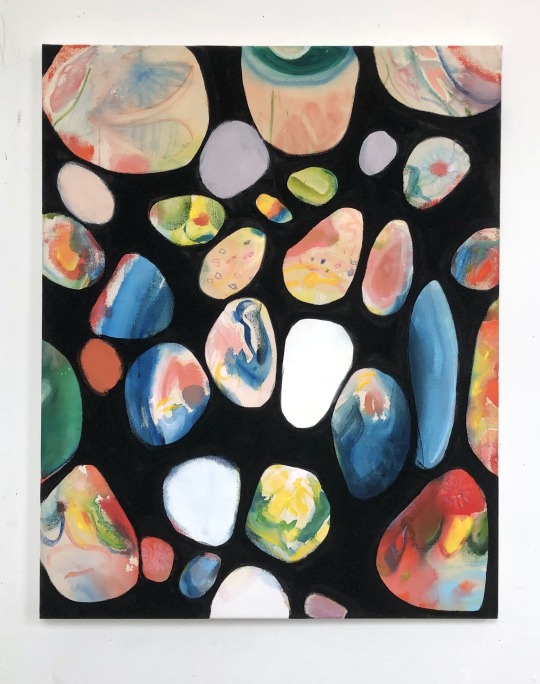
Scott Treleaven, The Long Way Home (2023) gouache, flashe, fluorescent pigment and wax pastel on canvas, 30 x 24”
6 notes
·
View notes
Photo

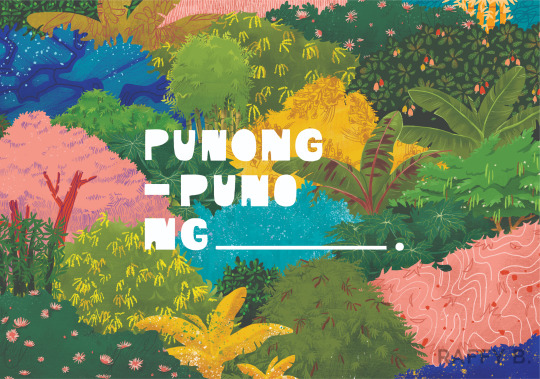
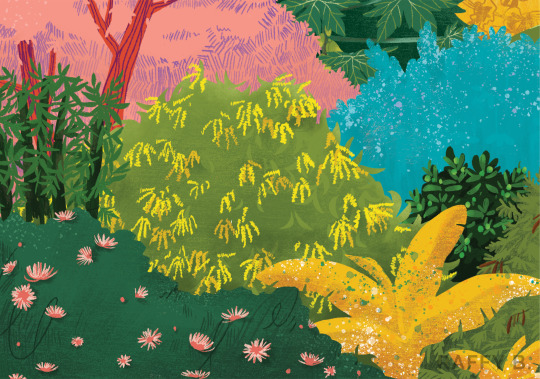
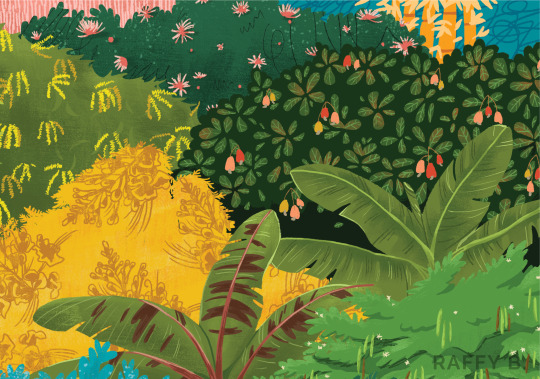
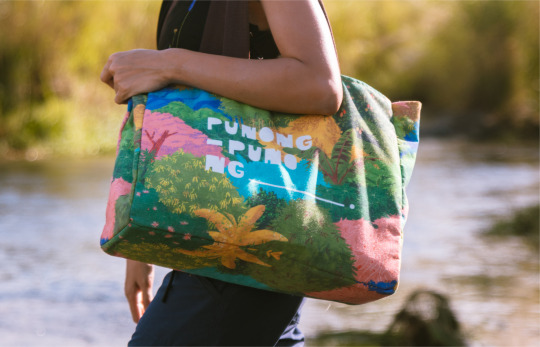

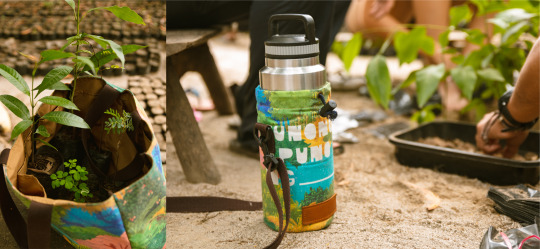
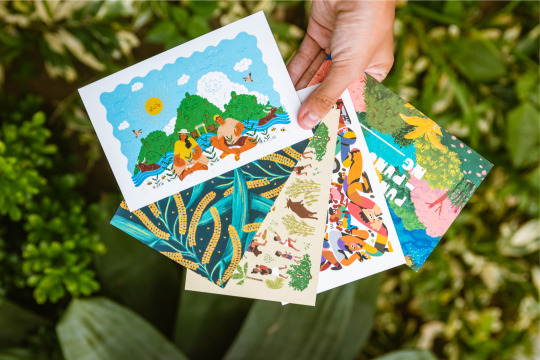
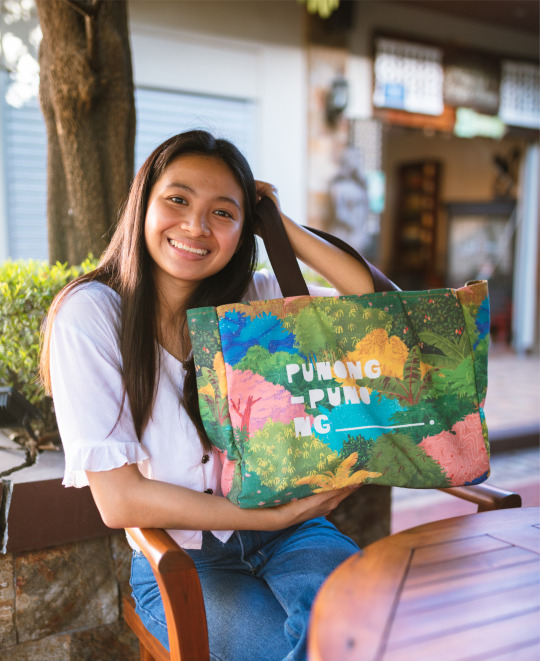
Future Forest bag illustration
Future Forest is an art-led reforestation project that aims to help the Yangil tribe in Zambales, Philippines sustain their reforestation initiatives. The project is a partnership between MAD Travel, a social enterprise that focuses on social tourism, Works of Heart, a social impact design studio, a group of Manila-based artists, and Gouache, a company that specializes in waxed canvas bags and similar goods. The project goes beyond just fundraising and involves creatives in understanding the dreams of the community. The project hopes to make a small but meaningful contribution to the reforestation project, one that is within their means but also fully aligned with what the community specifically needs.
As one of the partner artists in the project, we were tasked to create art pieces that would raise awareness and support for the reforestation efforts in Yangil Village, Zambales, Philippines. The art pieces were intended to be sold to raise funds for the community's seedling nursery, which would help sustain the reforestation initiatives in the area. We were given creative freedom to explore their own styles and mediums, but the theme of the artwork had to be centered on the environment, specifically on the importance of reforestation and sustainable living. The goal was not only to raise funds, but also to spark conversations and inspire action towards a more livable environment for everyone.
Everyone’s works were amazing, you can learn more about this project here!
#FutureForest#artandenvironment#natureinspiredart#conservationart#sustainablefuture#works of heart#illustration#product design
0 notes